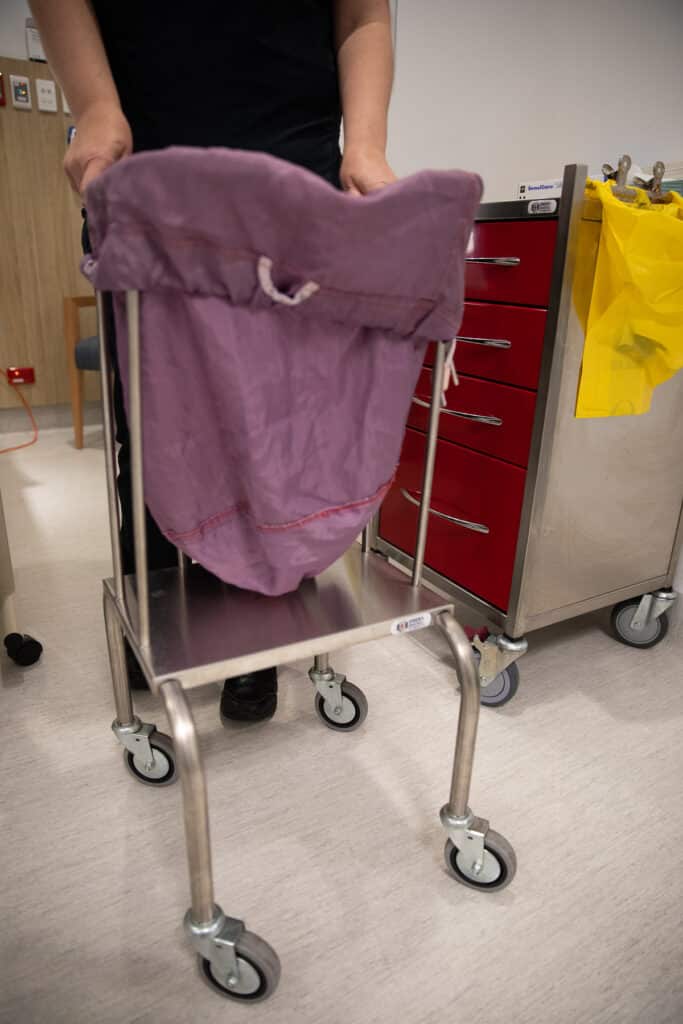Selecting the right linen trolleys for your aged care facility is crucial for maintaining hygiene and efficiency. With various options available, it’s important to consider the specific needs of your team and the environment in which they operate. Here’s a guide to help you make the best choice.

Before selecting a linen trolley, assess the specific requirements of your aged care facility. Consider factors such as:
Determine the volume of linen that needs to be transported daily. Larger facilities may require trolleys with greater capacity to minimise trips.
Evaluate the available space for manoeuvring trolleys. Compact designs might be necessary for facilities with narrow corridors.
Ensure that the trolleys meet the hygiene standards necessary to prevent contamination and the spread of infection.
When choosing linen trolleys, consider the following features:
Choose trolleys made from durable materials like stainless steel or powder-coated steel, which are easy to clean and maintain.
Look for trolleys with swivel castors for ease of movement, especially in facilities with tight spaces.
Consider trolleys with ergonomic designs that reduce strain on staff during transport.
Implementing best practices for handling and transporting linen is crucial to maximise the benefits of your chosen trolleys and maintain high hygiene standards in aged care facilities. Here’s an expanded guide on how to effectively manage linen handling:
Conduct regular checks for any damage or wear that might harbour dirt or bacteria. Pay special attention to wheels, brakes, and handles.
Establish a cleaning schedule using appropriate disinfectants to maintain hygiene. Trolleys should be cleaned after each use, especially if they are used for soiled linen.
Organise linens efficiently to maximise space and minimise handling risks. Avoid overloading trolleys to prevent instability and ensure ease of movement.
Implement documented procedures for loading, unloading, and manoeuvring trolleys. Include emergency procedures for handling malfunctions or obstacles.
Ensure staff use appropriate Personal Protective Equipment (PPE) when handling soiled linen to protect against exposure to contaminants.
Store clean linen in a clean, dry area away from where soiled linen is processed. This helps avoid contamination from dust, moisture, and vermin.
Use colour-coded bags or covers to distinguish between clean and soiled linen, ensuring they are not mixed.
By adhering to these best practices, aged care facilities can enhance the operational efficiency and safety of their linen handling processes. Proper training, regular maintenance, and effective use of linen trolleys contribute significantly to maintaining high hygiene standards and reducing the risk of infection spread.
To further enhance your linen management, consider the SS42LR – Double Load Reducing Linen Skip from Emery Industries. This skip features a completely new design developed with feedback from existing health facilities, specifically tailored to meet Occupational Health and Safety (OH&S) requirements:
Designed to manage the amount that can be fitted into a linen bag, preventing overfilling.
The raised shelf level reduces the need for staff to bend, minimising strain.
A compact footprint allows for efficient storage in tight spaces.
Equipped with a mechanism to facilitate easy movement, whether the unit is empty or full.
Built to withstand the rigours of normal use, ensuring longevity and reliability.
Emery Industries’ linen skips are made to meet the National Safety and Quality Health Service (NSQHS) Standards, especially Standard 3, which is about preventing and controlling infections in healthcare. Our linen skips provide safe storage and transport for linen, following NSQHS rules for hygiene and infection control. They help with safe handling, transport, and storage, making sure your facility runs smoothly and safely.
https://www.backsafeaustralia.com.au/news/the-essential-guide-to-linen-handling
https://www.safetyandquality.gov.au/standards/nsqhs-standards